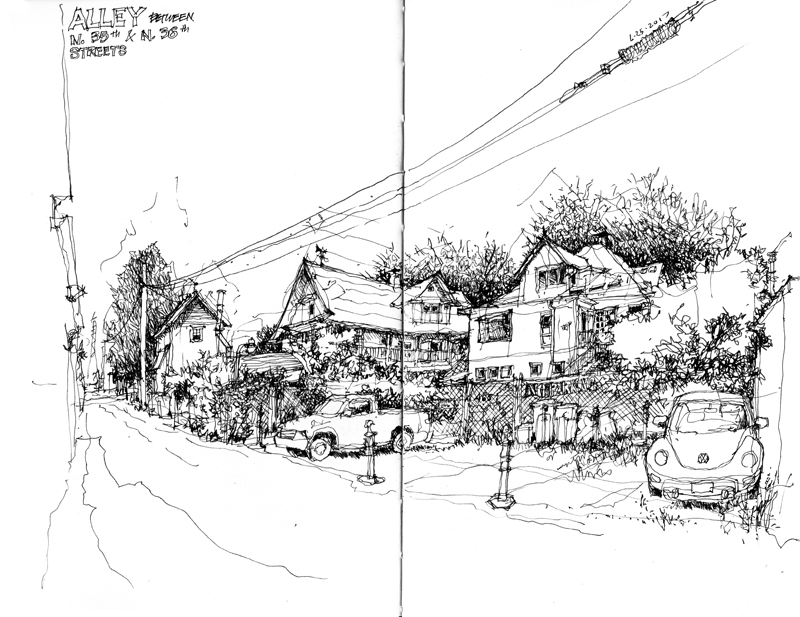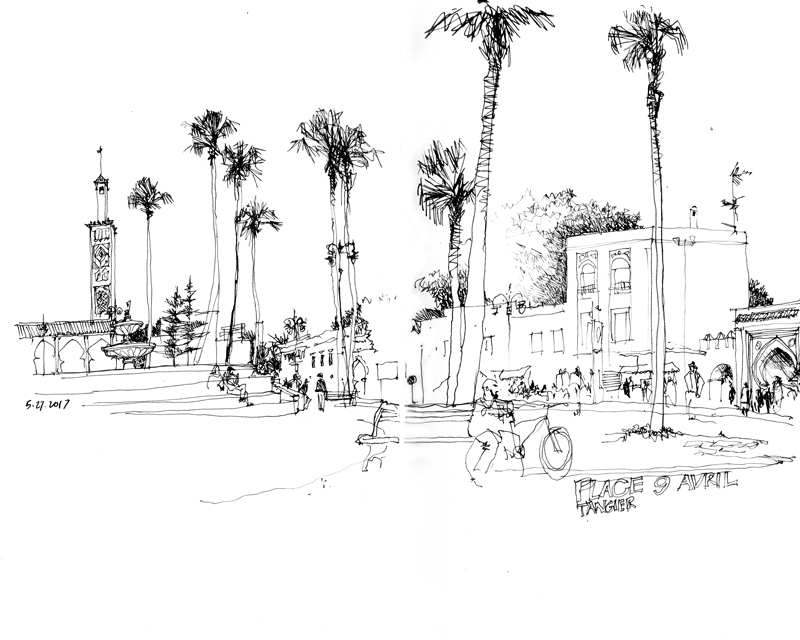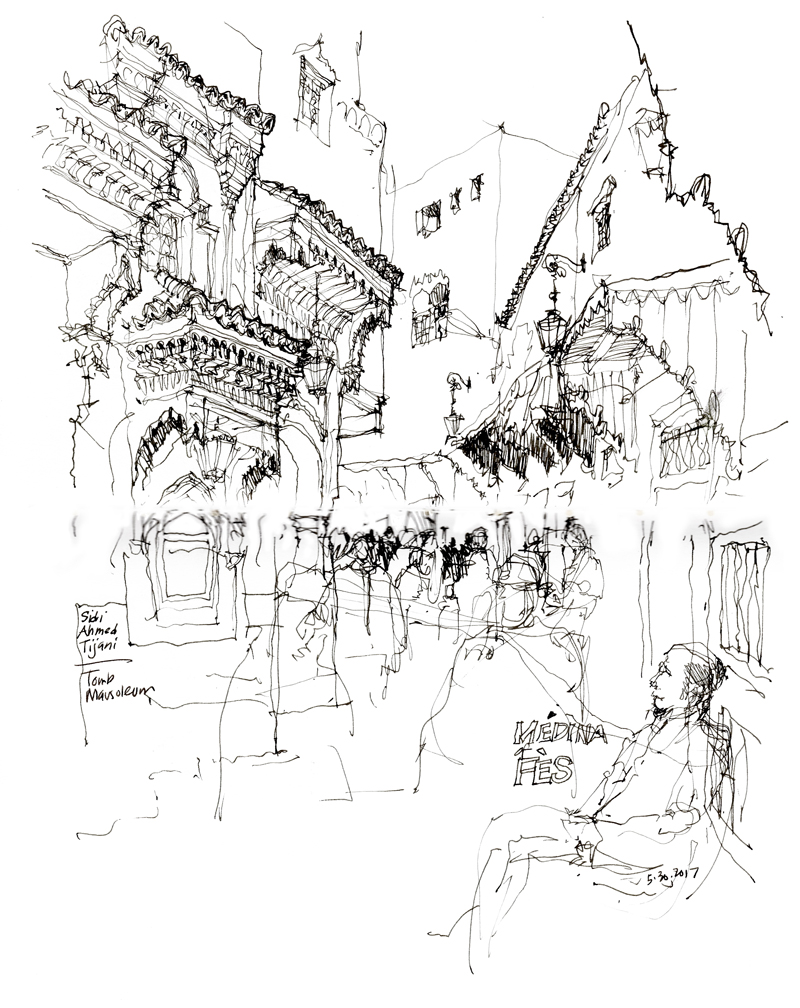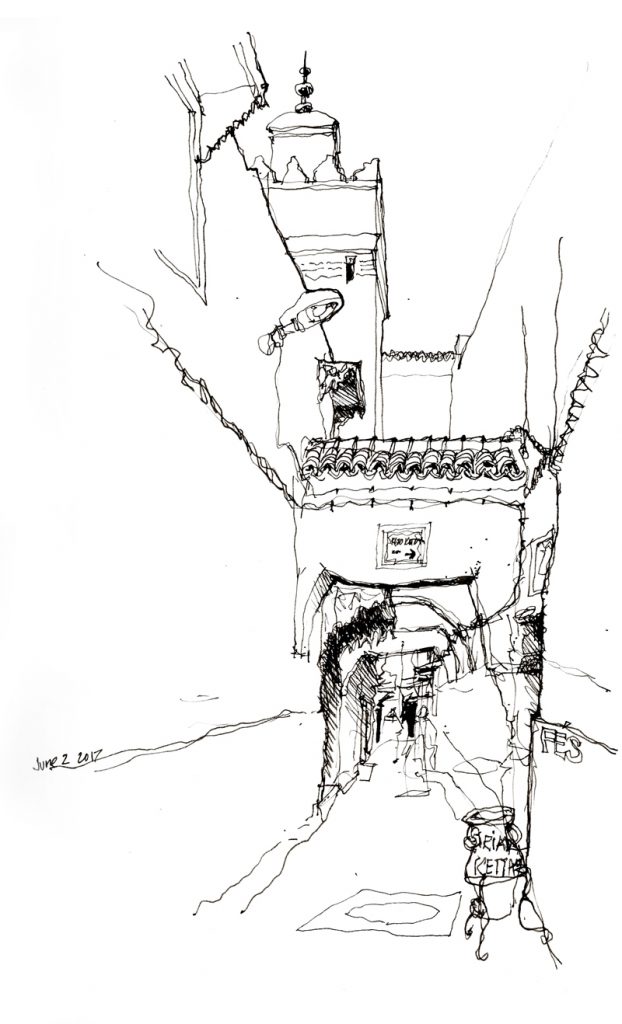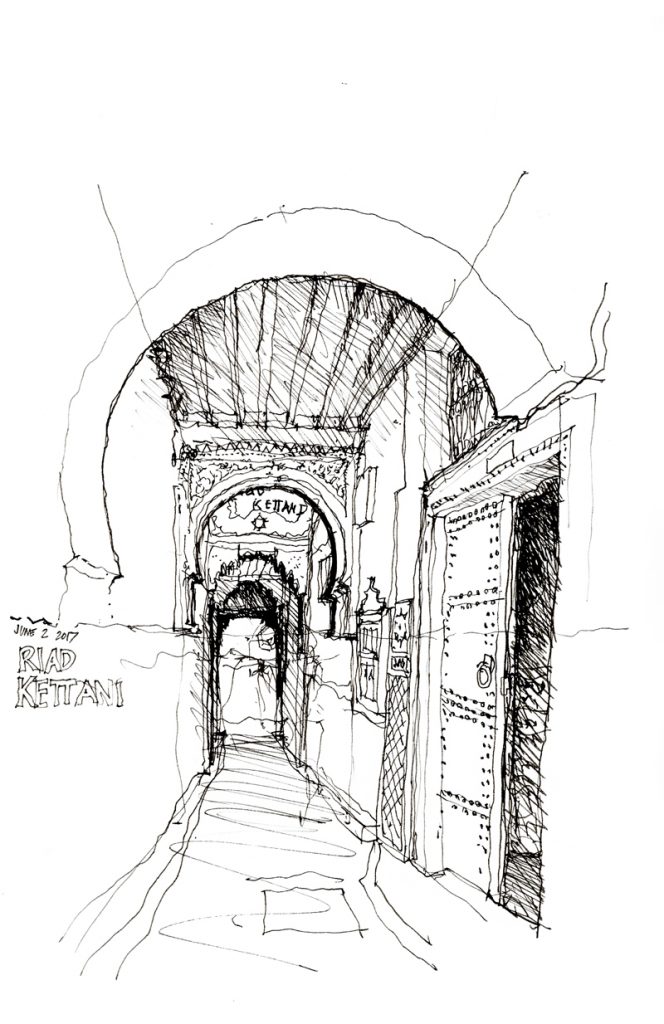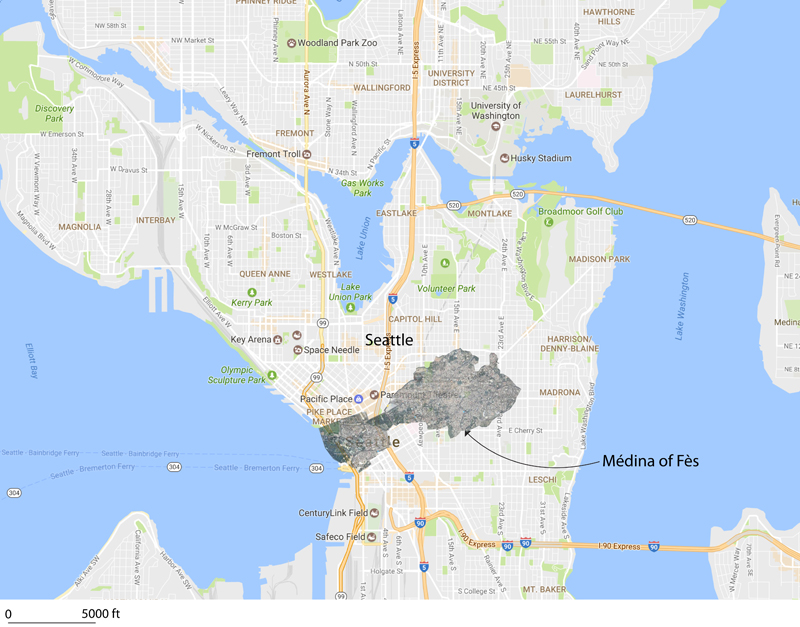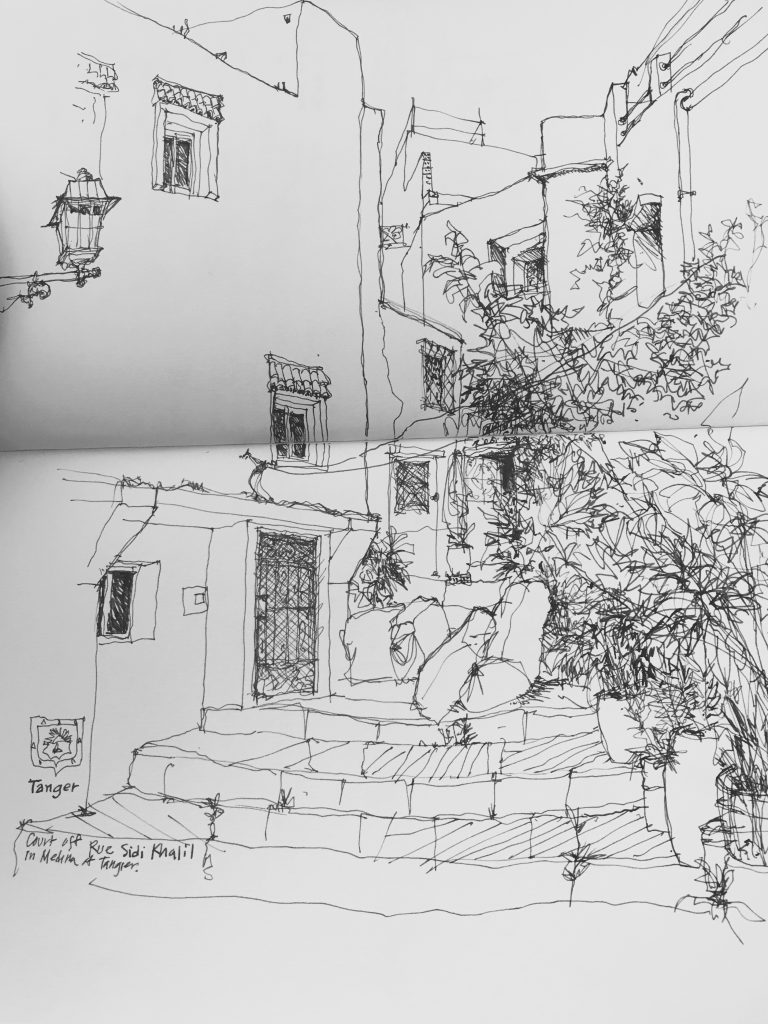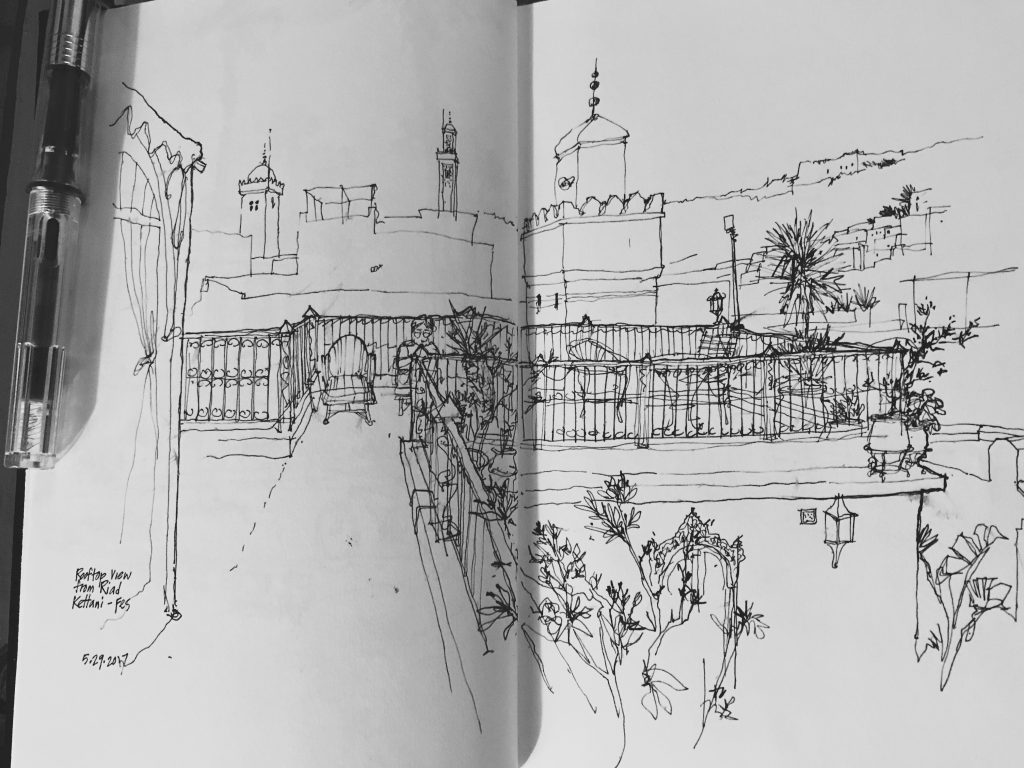The Seattle Urban Sketchers group met at the Lenin stature in the Fremont neighborhood this past Sunday morning. Despite the, for Seattle, hot sun and extremely warm temperature, I managed to find a shady spot from which to draw this view along the alley between North 35th and North 36th Streets.
Alleys are interesting places. In addition to serving as conduits for goods and services, they provide more intimate views of the back sides of buildings and other structures, which we mostly see from their more public fronts.
If you look closely, you will notice the stray lines that indicate my several attempts to get the building forms in proper proportion, relative to the width of the view. It’s important to realize that it is extremely difficult to execute a drawing without any of these stray lines unless one draws first in pencil before inking over and erasing the pencil lines. I prefer using only ink and letting the process of building a drawing show through.

